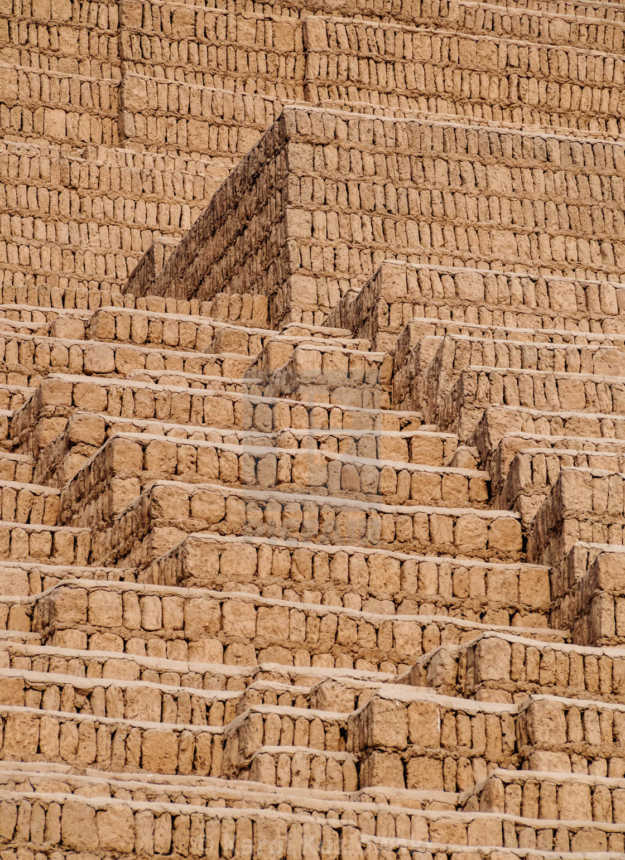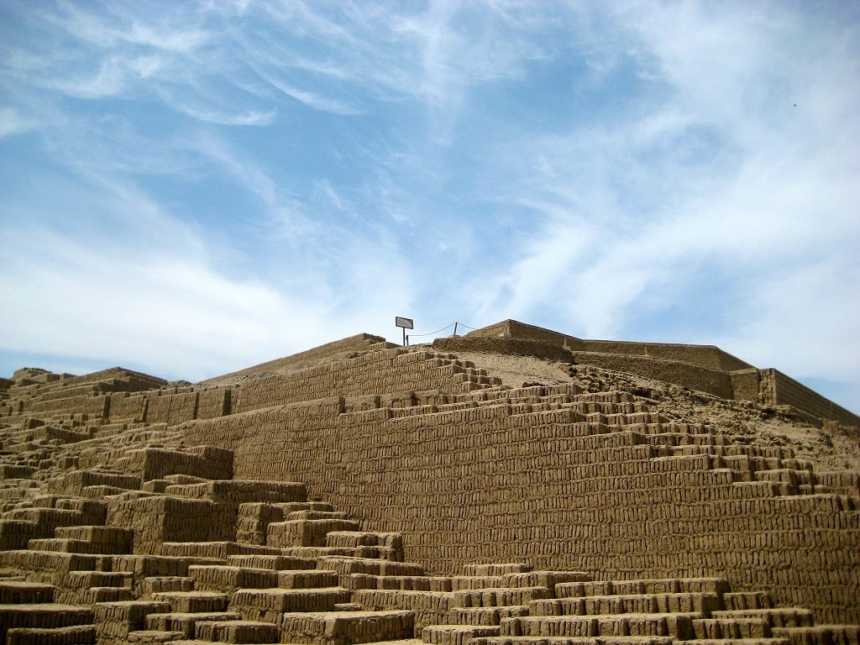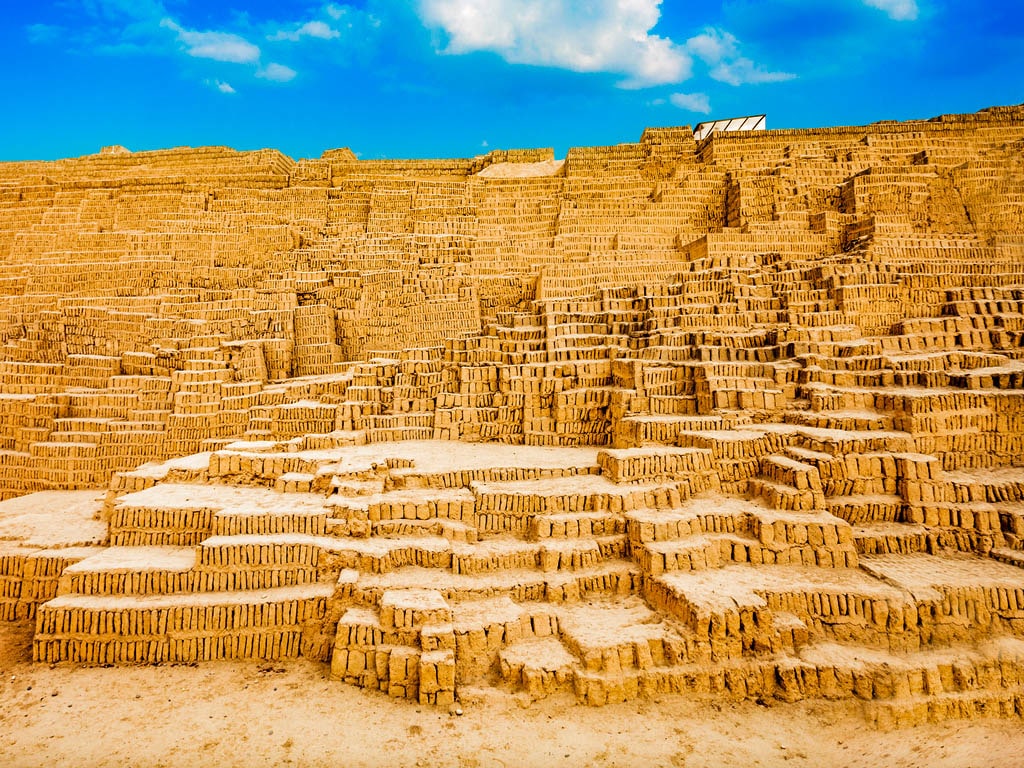In the middle of an upscale residential neighborhood in the Miraflores district of Lima sits an ancient adobe and clay pyramid, dating from 5th century. The Huaca Pucllana is a stepped structure with several large courtyards at different levels that are accessed through zigzagging ramps and long corridors.
Huaca Pucllana, much smaller in size compared to the Great Pyramid of Giza was nonetheless a tremendous engineering feat of ancient times. It was most likely visible from several miles away when it was complete, some 1,500 years ago.
The pyramid served as an important ceremonial temple and administrative center for the various cultures which prospered in the Lima region before the arrival of the Spanish conquistadors. The city was once home to around 40 pyramids which were destroyed throughout history and as the population expanded. Today, the massive pyramid stands as evidence of rich history and culture that lived in the region thousands of years ago.
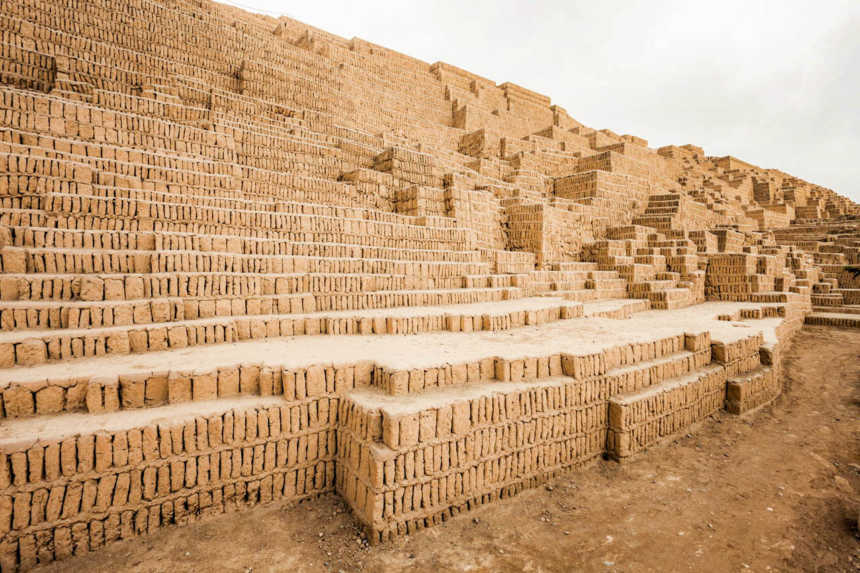
Who Built the Huaca Pucllana?
The pyramid was built by the Lima culture, a Pre-Incan indigenous coastal civilization that lasted in the region from around 100 CE to 650 CE. They built the seven-tiered pyramid and surrounding complex with clay and adobe (small, handmade bricks, dried in the sun), probably in the fifth century.
The Lima culture and their contemporaries were notable for their mastery of irrigation, which allowed them to develop settlements across considerable territory. The Lima Culture built canals redirecting water from the three main rivers to irrigate the entire valley in order to raise agriculture. This innovation was monumental in Lima’s development, without which it is doubtful the capital of Peru would have been founded on this site. While Lima’s coastline is rich in fish, complementing crops would support thriving civilizations for the next 2,000 years.
Also for being located to few kilometers from the sea, the people of Pucllana eat the sea products like fishes, shellfishes, snails, crabs and other goods.
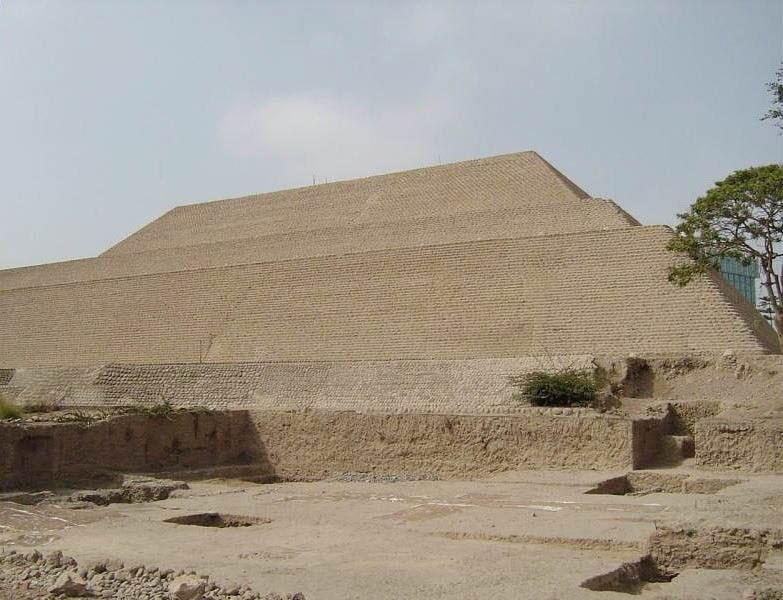
More About the Structure
The Pyramid which is more than 400 meters wide was built with adobe bricks stacked horizontally on top of each other. There is a plaza that surrounds the structure and a large wall dividing it into two different parts.
The administrative sector and the urban zone were located towards the east of this wall with places presumably used for public meetings, to discuss control and improvement of production. A number of small buildings, squares, ramps, patios and storage rooms completed this part.
The ceremonial sector towards the western part of the wall, contained the pyramid (made of adobe bricks, 500 metres long, more than 100 metres wide, 22 metres high) and adjacent places. Priests conducted here religious ceremonies honoring the Gods and ancestors.
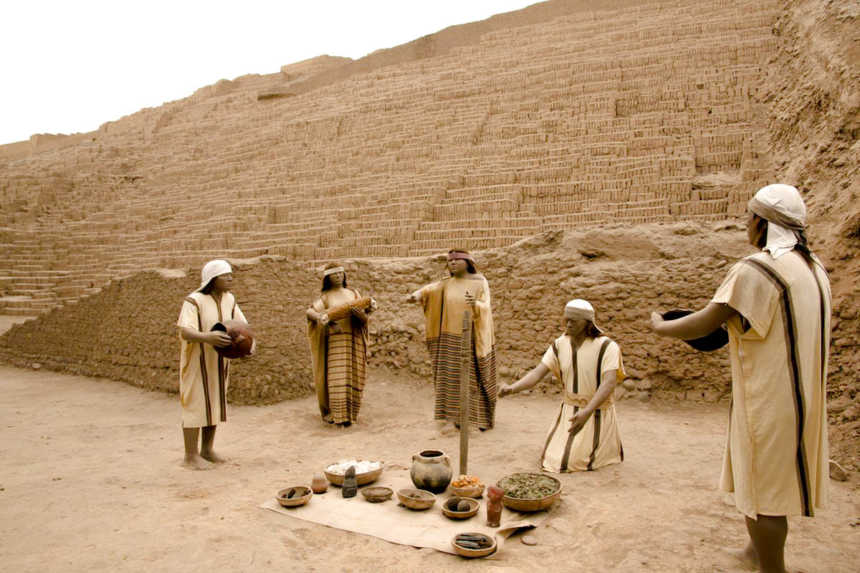
Archaeologists discovered textiles, decorated ceramics, bones, stone tools and remains of alpacas, guinea pigs, ducks, fish and other molluscs, corn, pumpkins, beans and fruits like cherimoya, lúcuma, pacae, guayaba. The findings give vital information about the life of the first “Limeños”. The houses were built near plantations or close to irrigation channels and typically for this time made of reed and adobe.
The Lima culture was overtaken by the Wari culture sometime around 700 CE. Under the Wari, Huaca Pucllana held significance primarily as a burial site for the nobility. The tombs on top of the pyramid were reserved for nobles, who were buried with small animals and Lima-style clay pottery. Several mummies have been unearthed at Huaca Pucllana, including a child in 2013 which archaeologists say suggests human sacrifice. Parts of the pyramid and complex were destroyed or modified to make this change.
A tomb in the Huaca Pucllana was discovered in 2005 during excavation, and it contained Wari textiles — the first conclusive proof that the Wari inhabited the central coast of Peru, far beyond their original locus in the mountains near the modern-day city of Ayacucho.
After the Wari Empire disintegrated, the Ichma Culture came to rule the Lima region from around 1100 A.D. until they were conquered by the Incas in 1470. The Ichma used Huaca Pucllana primarily as a site for worship and sacrifice, though graves from this period have also been uncovered recently.
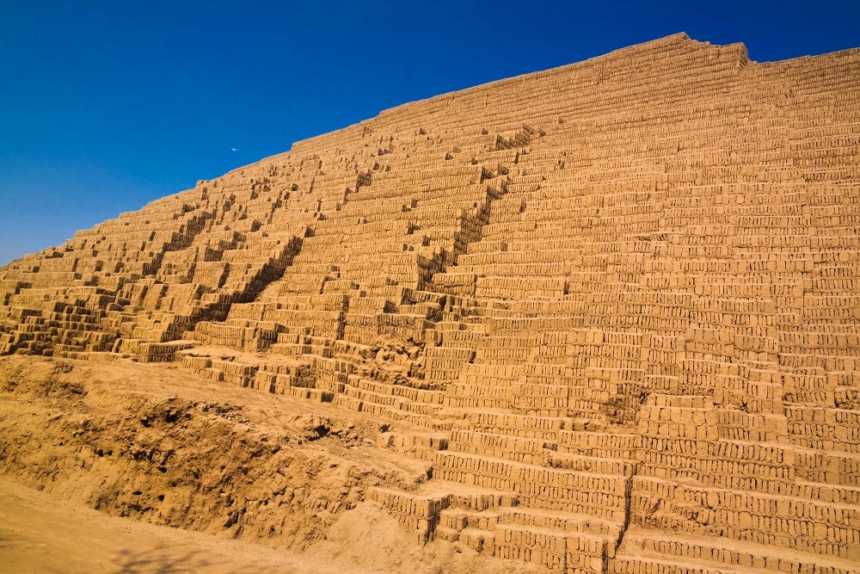
In 1991, the Peruvian Cultural Institute and the Municipality of Miraflores signed an agreement in 1991 that allowed the Huaca Pucllana pyramid to become a historical and cultural park in the city.
Today, it stands as evidence of the ingenuity and architectural complexity of pre-Columbian civilizations and developed cultures inhabiting the American continent long before the Europeans set foot on the New Continent.
The Huaca Pucllana complex includes an area for workshops, a small souvenir shop and a restaurant overlooking the ruins. The museum exhibits ceramics, textiles, tools, artifacts and other remains found on the site over the years.
